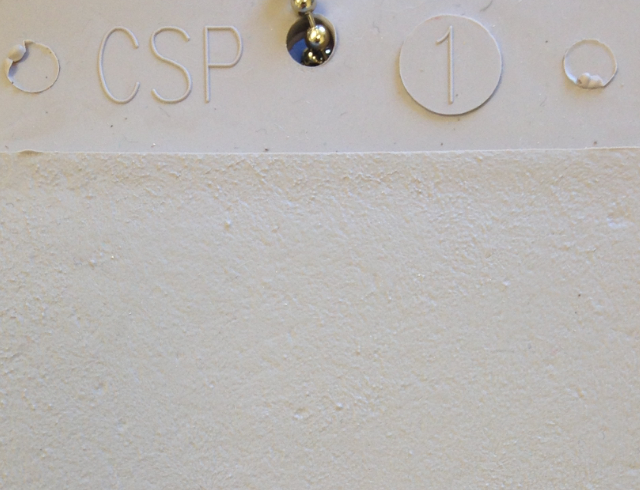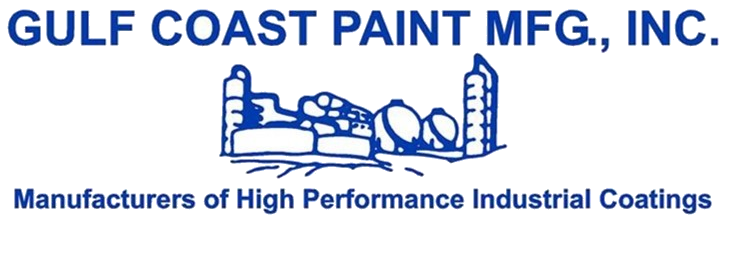
The following is only a suggested guide on acid etching concrete for the application of thin film coatings such as Epoxy and Polyurethanes. Contact Gulf Coast Paint Mfg. for more detailed information on Surface Preparation on concrete surfaces.
CAUTION: Acid etching requires the use of strong chemicals. Used improperly these chemicals can result in severe injury. When handling harmful chemicals, always wear protective clothing, protective eyewear/face shield, rubber gloves and boots. Do not breathe vapors.
Always add acid to water. Never add water to acid!
Protect surfaces not to be etched from chemical vapors, splash and spill.
Dispose of all residual material according to local and national regulations.
Scope: Acid Etching of Concrete for the Application of Coating Systems
Properly clean the concrete surface first before acid etching the floor.
Properly mix acid solutions.
Wet-out concrete surface with fresh, clean, un-contaminated water. (No ponding)
Apply acid solution uniformly.
Allow acid time to react: 2 – 10 minutes.
Rinse/scrub surface.
Check profile. Should be between 80 grit – 120 grit open-coat sand paper.
Check the pH (ideal pH is 7.0, but 7.0-8.5 is acceptable). Neutralize surface if necessary. Rinse/scrub surface.
Properly clean concrete surface. Remove all dirt, dust, grease, oils, wax, release agents or any other contaminants that will interfere with the acid etching and preparation of the concrete the concrete surface. Mechanical cleaning with stiff bristle brushes by hand or machine will be required for cleaners to work properly. Some contaminants such and sealers and curing compounds may not be removed by cleaning and will require the surface layer of the concrete to be removed by mechanical means. (Shot blasting, sanding, grinding, or any other approved method to remove the contaminant.)
Before the acid etching process begins Gulf Coast Paint recommends several tests:
Confirm new concrete is cured 28 days.
Confirm that a vapor barrier was installed.
Check for moisture following these 2 test methods that are most commonly accepted in the industry: ASTM 1869 (Calcium Chloride Test) and ASTM 2170 (RH Probe Test).
Complete a water dissipation test on random areas of the floor to determine that the proper degree of porosity has been achieved.
Properly mix acid solution. Acids that can be used to etch the concrete are, muriatic, sulfuric, phosphoric, or citric. The most commonly used are muriatic (hydrochloric-HCL) and phosphoric acids. Use only plastic or acid resistant containers for mixing and applying acid. Acids concentrations can vary. To determine the strength and concentration to use to etch the concrete, test with a very dilute solution then add acid to container until strong bubbling action is noted in the test. Allow approximately 50 – 75 sq. ft. for rough concrete and 75 – 100 sq. ft. for smooth concrete.
Wet-out concrete surface with fresh, clean, uncontaminated water. Wet-out the concrete with fresh, clean, uncontaminated water so the concrete is uniformly wet, without any standing or ponding water. The concrete must stay wet until the acid solution is applied.
Apply acid solution uniformly. Apply acid solution uniformly over the wet surface of the concrete. The use of a plastic watering can will enable you to make sure fresh acid is applied evenly over the surface to be etched. (DO NOT take a bucket of acid and dump it over the floor and spread it around with a broom. It will roll over the area and will neutralize as it spreads out giving an uneven etch to the surface of the concrete.) Applied properly to a clean surface the acid will begin to bubble indicating that the acid is reacting with the concrete. (If the acid fails to bubble on all or parts of the floor it means that the surface wasn’t cleaned thoroughly enough and must be cleaned and etched again.) Use a stiff bristle brush to scrub the acid into the surface and remove the layer of concrete to create the profile needed to apply the coating system.
Allow acid time to react: 2 – 10 minutes. Allow the acid to remain on the surface of the concrete until the bubbling stops, usually between 2 – 10 minutes. Do not allow any areas of the etched concrete to dry out dry out during this time.
Rinse / scrub surface. When the bubbling of the acid on the concrete surface slows noticeably, flush the concrete thoroughly with plenty of water while scrubbing the surface with stiff bristle brooms to remove the powdery residue from the pours of the concrete. This process may need to be repeated more than once to properly rinse the concrete. Collect and dispose of the liquids according to local and national regulations. After the floor is dry any powdery residue that remains on the concrete must be removed before applying the coating system.
Check profile. Should be between 80 grit – 120 grit open coat aluminum oxide sand paper. Check the profile of the concrete surface. It should be the roughness of 80 grit – 120 grit open coat paper. The concrete must have a uniform open / porous surface before application of the coating system. The surface must be etched until this is achieved. More than one etch may be required.
8. Check the pH (ideal pH is 7.0, but 7.0-8.5 is acceptable.) Neutralize surface if necessary.
Rinse / scrub surface. After the final rinse check, the pH of the wet surface. The ideal pH is 7.0, (neutral) but a pH of 7.0-8.5 is acceptable for most coatings unless otherwise specified. If the pH is below 7.0, residual acid in the concrete surface must be neutralized. One cup of household ammonia per gal. of fresh water will usually neutralize the concrete in one application.
Apply solution uniformly over the surface. Let stand for 10 minutes before flushing and scrubbing with distilled water. Re-check the pH and repeat if pH is below 7.0. Use indicators such as pH strips, pH pencils, or Phenolphthalein solution. Once you have reached your desired results, make sure floor is totally dry before applying coating system.
REMEMBER: After etching, examine the concrete for uniformity. The concrete texture should be similar to a CSP1, in accordance with ICRI (International Concrete Repair Institute). The surface should be free of surface glaze, laitance, salts and loosely adhering material. Sometimes, more than one etched may be required. Reference ASTM D4260, Standard Practice for Liquid and Gelled Acid Etching of Concrete. For the best performance from a coating system, concrete must be clean and have a uniform open / porous surface before application.
For questions on surface preparation or concrete floor coatings, contact Todd Theis at 251-964-7911 or todd@gulfcoastpaint.com.
